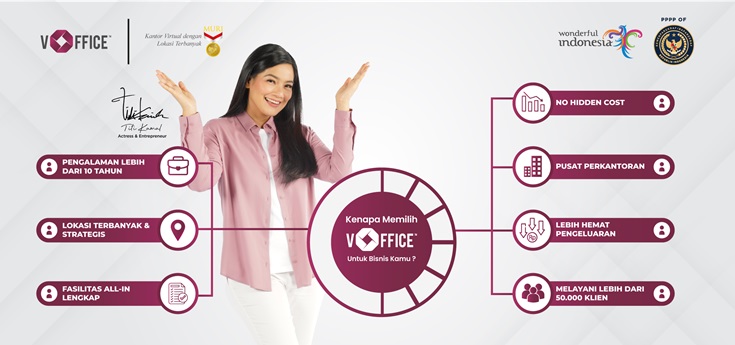Understanding the business model is a key step in planning, developing, and effectively managing a business. The business model is the foundation of every successful venture. In this guide, we will explore the concept of business models from the basics to practical steps for implementing a successful model.
What Is a Business Model?
Definition of a Business Model
A business model refers to the framework that details how a company creates, delivers, and extracts value in a market. It’s not just about how a company generates revenue but also about how they interact with customers, partners, and other factors in the business ecosystem.
Key Role of a Business Model in a Business
The business model serves as a strategic guide to direct the activities of a company. By defining resources, processes, and the value generated, the business model helps companies build a strong foundation for long-term growth.
Also read: Business Opportunity: The Secret to Success in the Business
Components in a Business Model
Identifying Business Model Components
Every business model consists of several key components, including value proposition, customer segments, distribution channels, customer relationships, key resources, key activities, key partners, and cost structure. Careful identification and in-depth understanding of each of these components are crucial for designing a successful business model.
Interrelation Among Components
When designing a business model, it’s important to understand how each component interacts with the others. For example, how do distribution channels support customer relationships, and how do key activities support the value proposition. Strong relationships among components will ensure alignment and coherence in the overall business model.
Read Also: Business Expansion: Strategies for Success & Best Tips
Benefits of a Business Model
Importance of Determining an Effective Business Model
Determining an effective business model is key to long-term business success. With a clear framework, companies can better manage resources, identify opportunities, and overcome challenges.
Advantages of Using a Clear Business Model
Companies with a clear business model tend to find it easier to secure investments, attract partners, and build strong customer relationships. These advantages become more crucial in a rapidly changing business environment.
Business Model Canvas
Introduction to Business Model Canvas
One popular tool for designing business models is the Business Model Canvas. It is a visual representation that encompasses all key business components in one image, allowing teams to see relationships and dependencies more clearly.
Steps to Create an Effective Business Model Canvas
Creating an effective Business Model Canvas involves steps such as identifying primary customer segments, determining the generated value, and identifying optimal distribution channels. With this canvas, teams can easily understand and collaborate in designing a robust business model.
Types of Business Models
Traditional Business Model
Traditional business models involve the exchange of goods or services with direct payment. Examples include direct sales, traditional retail, and professional services.
Digital Business Model
In the digital era, digital business models become increasingly important. This involves delivering value through online platforms, such as e-commerce, apps, and other digital services.
Subscription-Based Business Model, etc.
Subscription models are gaining popularity, allowing companies to secure sustainable revenue. Additionally, there are other business models such as freemium, software licensing, and more.
How to Determine the Right Business Model
Market and Customer Analysis
The first step in determining the right business model is to analyze the market and customers. Understanding customer needs and preferences will help companies tailor the offered value.
Financial and Operational Evaluation
When choosing a business model, financial and operational evaluation is crucial. The business model should provide high value with controlled costs.
Flexibility and Scalability
A successful business model should be flexible to adapt to market changes and scalable to support growth. This involves long-term thinking and the ability to adapt quickly.
Read Also: Definition of PT (Limited Liability Company), Types, Advantages
Importance of Adaptation in Business Models
Adapting to Market Changes
Market changes are constant in the business world. A successful business model must be able to adapt to changes in trends, customer needs, and other external factors.
Following Technological Developments
Technological developments often influence how businesses operate. Knowing technology trends and implementing innovations in the business model can provide a competitive advantage.
Case Study: Success of an Effective Business Model
Examples of Success Using the Right Business Model
Some successful companies have employed innovative business models. For instance, Amazon with its e-commerce model and Netflix with its digital content subscription model.
Lessons to Learn from Their Success
Observing the success of other companies can provide valuable insights. Factors like customer focus, quick adaptation, and innovation prove crucial in the success of business models.
Challenges in Determining a Business Model
Facing Changes in the Business Environment
Changes in the business environment, including regulatory changes, intense competition, and market dynamics, can pose significant challenges in determining the right business model.
Competition and Innovation
Fierce competition requires constant innovation. Finding a niche in the market and creating unique value is key to competing in a competitive business environment.
Future of Business Models: Trends and Predictions
Upcoming Changes in the Business World
Future trends in business models include the implementation of artificial intelligence technology, increased sustainability, and more service-based models.
Current Trends in Business Model Development
Current trends include a focus on customer experience, the use of data for decision-making, and increased data security.
Practical Steps to Implement a Successful Business Model
Implementing the Discovered Business Model
After finding the right business model, the next step is implementation. This involves setting up processes, training teams, and ensuring all departments are involved.
Evaluation and Periodic Updates
It’s important to continually evaluate the performance of the business model and make updates as needed. A growing business is one that constantly adapts to change.
Sustainability of Business Models
Factors Influencing Sustainability
The sustainability of a business model involves factors such as social responsibility, environmental sustainability, and the ability to retain customers.
Strategies for Sustaining Success
Sustaining success involves long-term strategies, including continuous innovation, product development, and maintaining brand reputation.
Ethical Considerations in Business Models
Impact of Business on Society and the Environment
In building a business model, it’s important to consider its impact on society and the environment. Ethical steps in business can enhance the company’s image.
Corporate Social Responsibility (CSR)
Engaging in corporate social responsibility activities, such as charitable initiatives or environmental initiatives, is a crucial step in creating a positive impact.
Conclusion
Summary of Article Content
Understanding the business model is an essential step in designing and managing a successful business. By understanding the definition, components, and benefits of the business model, companies can take the right steps for long-term growth.
Importance of Understanding and Adapting Business Models
It’s important to continually understand and adapt business models to changes in the market, technology, and customer needs. Successful businesses are those that can innovate and adapt quickly.










